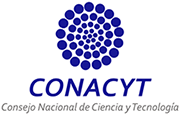Evaluation of an eco-community applied to urban diagnosis in the state of Hidalgo Mexico
DOI:
https://doi.org/10.20983/decumanus.2019.1.4Keywords:
Reuse, material, eco-communities, ornament, environmentAbstract
In the final project of the Master’s Degree in Urban Architectural Projects, he motivated research on the study of the problem of the use of waste materials in low-income communities; the search to detonate a new culture in the development of the economy and promote the necessary practices for the application of eco sustainability to the inhabitants, aldermen and merchants for the reuse of these, as well as to improve the quality of life and to detonate socio-economic development with positive results from a community, called Maney, in the municipality of Huichapan, Hidalgo, Mexico.
The lack of strategic urban planning in the birth and development of habitable spaces, hinders the growth of eco-communities in our country, by not identifying them to detonate in their inhabitants, identity and socio-economic and cultural development with goals and objectives clear for the following generations.
The purpose of this article is to analyze the concepts of eco-communities in socio-economic and cultural aspects, as well as national laws and regulations that allow their development. Another objective is to contextualize Maney as an eco-community of the 21st century, through the methodological design of a rural eco-communal scenario, through the endogenous, exogenous and exogenous variables applied to the place of study; the contribution in the descriptions of some theories and analysis of authors and researchers allowed to verify that Maney meets the urban parameters to identify it as an eco-community.
The management of information aimed at a new culture is achieved with clear and solid foundations, once the conditions have been identified and the time barrier has been passed. Through encouraging tourism, the local economy, in a group of people who extract the quarry, in this case, the as sociation of caterers and individually, it has been possible to qualify positively the development of an eco-community in Maney It was observed that the eco-communities start from interstitial spaces to use spaces, transforming them into places of recreation or work, triggering greater economic income privately or communally. Therefore, there would be the opportunity to consider them in the Urban Development Plans.
Downloads
References
Building Rurban Rela, recuperado el 28 de septiembre de 2005 memoria de traducción recuperado en img src=”//media.glosbe.com/a/_source__94809@glosbe.com-64.png”/>EurLex-2).
Cattaneo, C. (2013). Urban squatting, rural squatting and the ecological-economic perspective. En Squatting Europe Kollective. Recuperado de www.minorcompositions,info/wp-content/uploads/2013/03/squattingeurope-web.pdf.
Cattaneo, C (2015). Ecología Política: Eco-comunidades. Recuperado el 31 de http://www.ecologiapolitica.info/?p=2338.
Isla, F. (2002). Breve análisis de la legislación minera. Recuperado de http://www.jurídicas.unam.mx.
Gilman, R. (1991) The eco-village challenge. Recuperado el Recuperado en: http://www.context.org/iclib/ic29/gilman1/.
Instituto Nacional de Estadística y Geografía (2009). Resumen de los resultados de los Censos Económicos 2009. [Versión electrónica], CDMX, México.
Instituto Nacional de Estadística y Geografía (2010). Catalogación en la fuente Censos Económicos. La industria minera ampliada: 338.0972
Martínez, R. (2013). Diseño Arquitectónico Enfoque Metodológico (2ª ed), CDMX, México: Trillas.
Mirón, M. (2004). Oikos y oikonomia: El análisis de las unidades domésticas de producción y reproducción en el estudio de la Economía antigua. Gerión. Doi http://revistas.ucm.es/index.php/
GERI/article/view/GERI0404120061A.
OCDE y la Comisión Europea. Asociación para un desarrollo urbano-rural sostenible, RURBAN. Building Rurban Rela, recuperado el 28 de septiembre de 2005 memoria de traducción recuperado en img src=”//media.glosbe.com/a/_source__94809@glosbe.com-64.png”/>EurLex-2).
Santos, C., Escamilla, I. y Guarneros, L. (2010). “Expansión urbana al norte de la Zona Metropolitana de la Ciudad de México: ¿un triángulo de deterioro ambiental sin posibilidad de desarrollo sustentable?”. En M. T. Sánchez Salazar, G. Bocco, J. M. Casado Izquierdo (Coords.). La política de ordenamiento territorial en México: de la teoría a la práctica. México: Instituto de Geografía, UNAM, Centro de Investigaciones en Geografía Ambiental, Secretaría de Medio Ambiente y Recursos Naturales, Instituto Nacional de Ecología y Cambio Climático.











